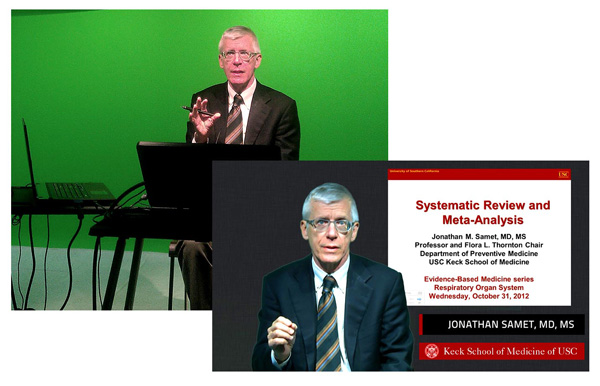Telestream, the leading provider of digital media tools and workflow solutions, today announced that the Preventive Medicine Soto Studio at the Keck School of Medicine of USC has developed a model approach in distance education. Using Telestream's streaming production software Wirecast, Soto Studio produces video on demand lectures for USC's Master of Public Health Online Program and creates engaging and informative instructional content for multiple departments that students can access outside of the classroom. This enables a 'flipped classroom' teaching style, so that class time can be used to explore topics in greater depth to give students a more meaningful learning experience.

“Our goal is to produce videos of our college lectures that offer the same high-quality production standards that viewers have come to expect from a TV newscast. Wirecast makes it easy for us to go beyond just showing static images or PowerPoint slides on-screen accompanied by a voice-over. We can now produce videos that feature the professors interacting with their slides and other visuals, interviewing their guests, and other dynamic presentation formats,” explains Gary San Angel, Distance Education Specialist / Media Technology, Department of Preventive Medicine at the Keck School of Medicine of USC, Los Angeles, CA.
Every week, Soto studio produces on average 20 finished hours of HD video lectures and webcasts to support various distance learning, academic, research and public outreach initiatives at USC. To make the lecture videos more engaging, effective learning tools, Soto Studio uses Wirecast’s many easy-to-use video production capabilities. With just a few mouse clicks, users can switch between cameras, key in over-the-shoulder or full-screen graphics into the greenscreen, roll in program opens, closes and music tracks, create real-time transitional effects, display titles, lower third supers and full-screen text and so much more.
“Wirecast makes it possible for us to produce compelling video lectures, complete with green screen keys, digital video effects, lower third supers and other broadcast-quality enhancements. The workflow is fast, simple and straightforward, with real-time streaming and recording. Wirecast is tailor-made for distance learning, flipping the classroom and many other educational applications where budgets and space are at a premium. We are quite fortunate to have found Wirecast, as it has proven to be a robust, feature-rich, affordable solution that satisfies our unique production needs,” explains San Angel.
With its simplicity and reliability, Wirecast enables an easy-going and trouble free production environment. Most video productions are shot, completed and handed off to busy professors within a few hours, ready for them to use for their class the next day.
Once produced, the video lectures for the Master of Public health online program are delivered to the department's Learning Management System and integrated into each course, while lectures intended for on-campus students are uploaded to a local Media Site server as well as a Vimeo cloud-based server that enables password-protected access on demand. Other instructional videos are accessible to students on demand via Ustream, YouTube and Vimeo, or delivered as live webcasts.
"As a top tier university, we believe that high quality video is key to providing our students in the traditional classroom as well as online learners, a top tier educational experience that engages and enlightens them. Because the online videos created with Wirecast are so professionally produced, our faculty often end up using them in their campus-based teaching as well, and more and more of our colleagues across campus are interested in using this powerful video resource to better reach and educate their students,” said Shubha Kumar, Ph.D., MPH, Assistant Professor of Clinical Preventive Medicine and Director of the Online Master of Public Health Program at the Keck School of Medicine, University of Southern California.
The professional video industry's #1 source for news, trends and product and tech information. Sign up below.
More information is available at www.telestream.net.
